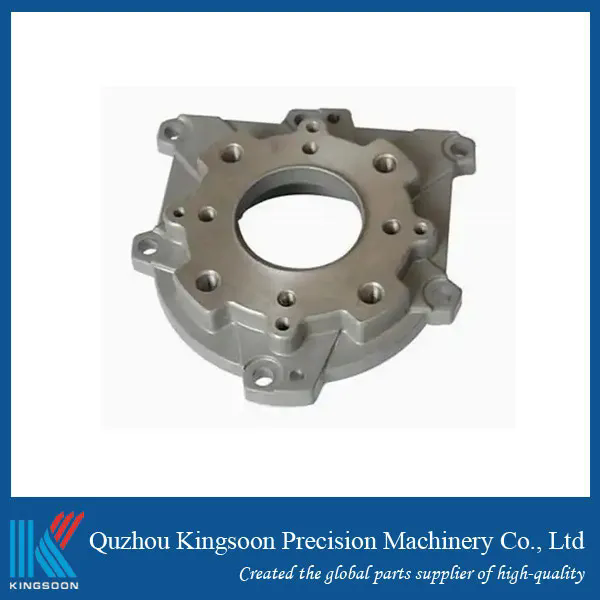Casting Parts: The Backbone of Modern Manufacturing
2024-11-29
Casting parts are integral to numerous industries, forming the backbone of everything from automotive engines to household appliances. This versatile manufacturing method, which involves pouring molten metal or other materials into a mold to create specific shapes, has been a cornerstone of human innovation for centuries. Today, advancements in technology have elevated casting to new levels of precision, quality, and efficiency.
What Are Casting Parts?
Casting parts are components created through the casting process. This involves heating a material—typically metal like aluminum, steel, or iron—until it becomes liquid, then pouring it into a mold designed to shape the material into the desired form. Once cooled and solidified, the casting is removed and processed further to meet exact specifications.
Why Casting Parts Matter
Casting offers unique advantages that make it a preferred choice for manufacturers:
1. Complex Shapes
- Casting allows the creation of intricate designs that would be challenging or impossible to achieve with other manufacturing techniques.
2. Material Versatility
- From metals to plastics, casting accommodates a wide range of materials, making it adaptable to diverse industries.
3. Cost-Effective for Large Quantities
- Once the mold is designed, producing multiple parts becomes highly economical, making it ideal for mass production.
4. High Strength and Durability
- Cast components often possess excellent mechanical properties, ensuring long-lasting performance even under extreme conditions.
Types of Casting Processes
Casting parts can be produced through various methods, each tailored to specific requirements:
1. Sand Casting
- Overview: Uses sand molds for production.
- Applications: Large components like engine blocks and industrial machinery.
- Advantages: Low cost, flexibility in size and shape.
2. Die Casting
- Overview: Employs high-pressure techniques to inject molten metal into molds.
- Applications: Automotive parts, electronic housings, and precision tools.
- Advantages: High precision, smooth surface finish, fast production cycles.
3. Investment Casting
- Overview: Utilizes wax patterns covered in ceramic shells to create molds.
- Applications: Aerospace components, medical devices, and jewelry.
- Advantages: Exceptional detail and surface quality, suitable for complex geometries.
4. Centrifugal Casting
- Overview: Spins the mold to distribute the molten material evenly.
- Applications: Pipes, cylinders, and hollow components.
- Advantages: Excellent structural integrity and uniformity.
5. Continuous Casting
- Overview: Produces long lengths of material by solidifying molten metal in a continuous process.
- Applications: Metal rods, billets, and sheets.
- Advantages: High efficiency, reduced material waste.
Applications of Casting Parts
Casting parts are essential across various sectors:
1. Automotive Industry
- Engine blocks, cylinder heads, and transmission cases rely heavily on casting for durability and performance.
2. Aerospace
- Precision-cast turbine blades and structural components meet the rigorous demands of aerospace engineering.
3. Construction and Infrastructure
- Cast iron pipes, manhole covers, and architectural elements are indispensable in building and infrastructure projects.
4. Electronics and Appliances
- Lightweight yet strong cast parts are used in electronic housings, heat sinks, and appliance frames.
5. Energy Sector
- Cast components such as wind turbine hubs and power plant equipment ensure reliable energy production.
Advantages of Modern Casting Technologies
1. Improved Precision
- Advances in computer-aided design (CAD) and simulation have enhanced the accuracy of cast parts, reducing errors and material waste.
2. Enhanced Materials
- The development of high-performance alloys has expanded the durability and functionality of cast components.
3. Automation and Efficiency
- Robotic systems and automation in foundries streamline production, increasing consistency and lowering costs.
4. Sustainability
- Recycling scrap metal into new cast parts minimizes environmental impact and conserves resources.
Challenges in Casting Parts Manufacturing
Despite its many advantages, casting does present some challenges:
- Shrinkage and Defects: Improper cooling can lead to defects such as cracks or porosity.
- Tooling Costs: Creating molds can be expensive, particularly for small production runs.
- Energy Consumption: Melting metals requires significant energy, driving the need for more efficient methods.
Future Trends in Casting Parts
1. Additive Manufacturing Integration
- Hybrid approaches combining casting and 3D printing are reducing lead times and enhancing design flexibility.
2. AI and Machine Learning
- Predictive algorithms optimize mold design, material usage, and defect detection.
3. Eco-Friendly Casting
- Innovations in low-energy melting techniques and biodegradable molding materials are promoting sustainability.
4. Advanced Alloys
- The development of lightweight, corrosion-resistant alloys is expanding the capabilities of cast parts in extreme environments.
Conclusion
Casting parts remain a vital component of modern manufacturing, delivering precision, strength, and cost-efficiency across industries. With the continuous evolution of technology, casting is set to become even more versatile, sustainable, and integral to the creation of products that shape our world.
Whether you're an engineer, manufacturer, or industry innovator, casting parts represent an enduring and evolving solution for your design and production needs.
Embrace the power of casting, and bring your ideas to life with precision and reliability.



